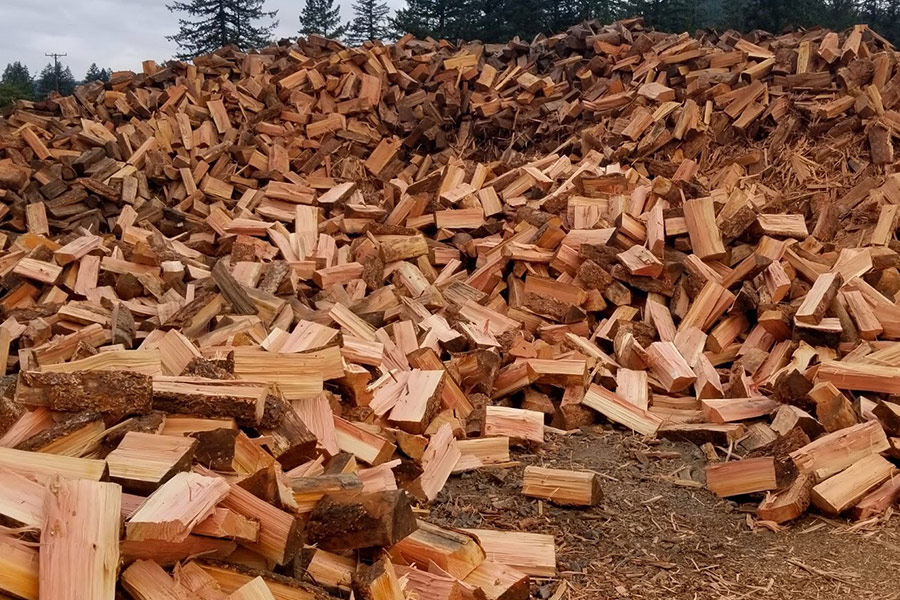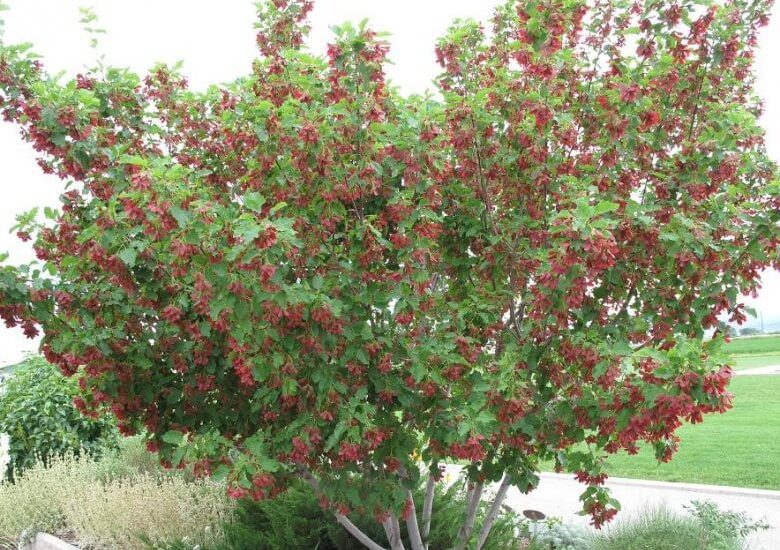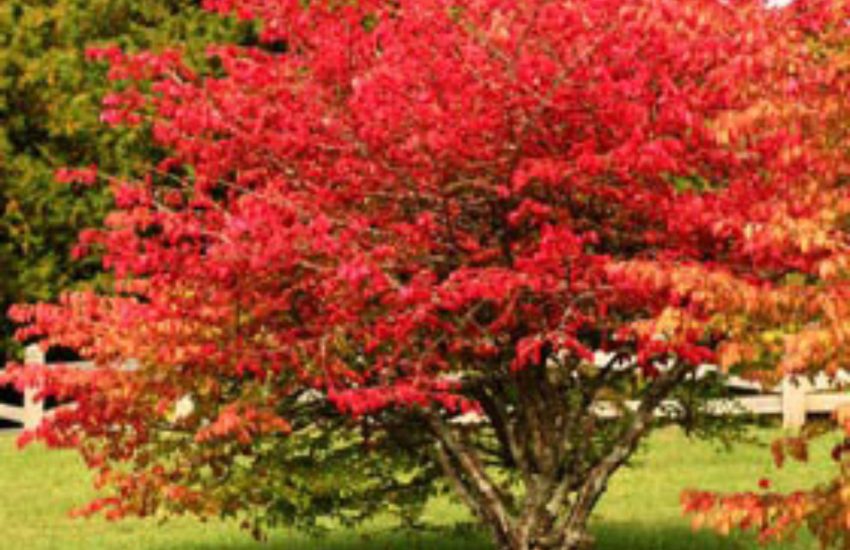Is Fir Good For Firewood – Using Fir For Burning
Fir is one of the best firewood trees among coniferous trees. While Fir is not a top contender when it comes to the best firewood, its high resin content and low ignite temperature make it ideal firewood for starting fires. For example, the resin in Fir helps to create more sparks when struck with a match than other types of wood. Additionally, Fir has a low ignite temperature, meaning that it lights easily and quickly. Fir is an excellent choice for those who want to build a fire with minimal effort. In addition to its usefulness as firewood, Fir also provides an enjoyable scent when burned. Its pleasant aroma makes it a popular choice in wood-burning stoves and fireplace logs. Here is a detailed examination of Fir as firewood.

Common Characteristics of Fir Trees
Fir trees are coniferous evergreens known for their tall, straight trunk and pyramid-like shape. They are native to North America, Europe, and Asia and can grow up to 150 feet tall. Fir trees have needle-like leaves that are attached to the branches in clusters. The leaves are dark green and lighter green on the bottom. The bark of fir trees is smooth and reddish-brown. Fir trees produce cones that are 3-6 inches long. The cones contain seeds that are dispersed by wind and animals. Fir trees are an important source of timber and are used in the production of paper, furniture, and flooring. They are also widely used as Christmas trees. Additionally, Fir trees may also be used for firewood.
Common Varieties of Fir Trees Used for Firewood
Douglas Fir
The Douglas fir is the most common type of fir tree. It is native to North America and can grow up to 300 feet tall. The Douglas fir has short, soft needles that are blue-green. The bark is thick and red-brown. Cones are oval-shaped and brown. Douglas Fir is the most preferred Fir variety to use as firewood as it has the highest BTU rating among all Fir species.
White Fir
The White Fir is a medium-sized fir tree that grows to be about 100 feet tall. It is native to North America and has short, soft needles that are blue-green. The bark is thin and gray-brown. White Fir has a lower BTU rating than Douglas Fir, but it is still a good choice for firewood.
Balsam Fir
This is one of the softest Fir species available and has a low BTU rating of 15.8 per cord. The soft nature of the tree makes it ideal for kindling fires. It is also used as a Christmas tree due to its pleasant smell.
Seasoning Fir Firewood
Douglas fir firewood should be seasoned for at least six months, ideally up to a year, before burning. The seasoning process helps to remove moisture from the wood, making it easier to light and ensuring that it burns hot and efficiently. There are a few different methods for seasoning firewood, but the most important thing is ensuring that the wood is properly aired. One way to do this is to split the logs into smaller pieces and then stack them in a dried, sheltered location. Another method is to place the logs on a metal rack with good airflow on all sides. Whichever method you choose, check the wood regularly and remove any pieces that are starting to rot or mold. Once the wood is properly seasoned, it will be dry to the touch and have cracks on the surface. Seasoning firewood takes time and patience, but the results are worth it. Well-seasoned wood burns hotter and produces less smoke, making it a superior choice for use in fires.
Heat output and Efficiency
How efficient is Fir firewood in BTUs? Fir is a softwood and, therefore, has a lower density than hardwoods. As a result, it burns more quickly and doesn’t produce as much heat. However, Fir is still a good choice for firewood if you’re looking for an economical option. One cord of Douglas fir firewood typically contains around 20 million BTUs of energy. In comparison, a cord of oak wood contains around 26 million BTUs of energy. Therefore, Fir is less efficient than oak in terms of heat output. However, Fir is still a good choice for firewood if you’re looking for an economical option. Other species of Fir, such as White Fir and Balsam Fir, have a much lower BTU rating of 15.8, making them more suited as fire starters rather than firewood.
Does it Spark?
Fir firewood is one of the best choices for a wood-burning fireplace. Unlike other woods, fir firewood produces little to no sparks when burned. This is because fir wood is less dense than other types of wood, resulting in less heat and fewer sparks. While this may be disappointing for those who enjoy watching the sparks fly, it is good. Sparks can be dangerous and can also start wildfires if they land in dry grass or leaves. So, while fir firewood may not be the best choice for making s’mores, it is a good option for those who want to stay safe while enjoying a campfire.
Does it Smoke?
While many factors can affect the amount of smoke produced by firewood, density is one of the most important. Hardwoods like oak and ash are very dense, meaning they don’t have a lot of air spaces between their cells. This makes it difficult for oxygen to reach the center of the log, which can lead to more smoke. Fir is one of the best woods for producing less smoke. This is because it is a softwood with a low density. This means that there are more pores per unit volume, which allows for better aeration. As a result, Fir burns cleaner and produces less smoke. Fir is a great option if you are looking for firewood that will produce less smoke.
Creosote Buildup
Burning fir firewood produces creosote. Creosote is a tarry substance that can build up on the inside of your chimney, increasing the risk of a chimney fire. The best way to prevent creosote buildup is to burn only dry, seasoned wood. Seasoned wood is wood that has been cut and left to dry for at least six months. When burning fir firewood, make sure to keep the damper open so that air can circulate and keep the fire burning hot. A fire will produce less smoke and creosote than a slow-burning fire. If you have a fireplace insert or stove, use it to control the amount of air that enters the firebox. By burning hot fires and keeping the damper open, you can help prevent creosote buildup in your chimney.
Pros
- Fir is a sustainable firewood choice.
Fir is a renewable resource that can be replenished over time. When managed properly, fir forests can provide a sustainable supply of firewood for generations.
- Fir is easy to light
Due to its low density and good aeration, Fir is one of the easiest firewood to light. As has been previously stated, some Fir species, such as White Fir, are used as fire starters due to the ease of lighting.
- Fir is easy to split and stack.
Another advantage of fir firewood is that it is easy to split and stack. This makes it a great choice for those who want to save time when preparing their woodpile for the winter.
- Fir produces little smoke and ash.
Fir also produces less smoke and ash than other types of wood, making it a more environmentally friendly option. This can be beneficial if you are concerned about the impact of your wood-burning habits on air quality.
- Fir is widely available.
Finally, Fir is widely available in North America, making it a convenient option for those who live in this region.
Cons
- Fir is a softwood
One of the main disadvantages of using Fir for firewood is that it is a softwood. Softwoods are not as dense as hardwoods, and as a result, they do not burn as hot or as long. This means that you will need to use more fir wood to achieve the same heat level as hardwood.
- Fir has a high moisture content
Another disadvantage of using Fir for firewood is that it has a high moisture content. This means that it will take longer for the wood to dry out and produce more smoke when burned. If you are looking for wood that burns hot and clean, Fir is not the best option.
- Lower BTU Content
One of the primary disadvantages of using Fir for firewood is that it has a lower BTU content than other types of wood. The lower BTU content of Fir means that it will produce less heat than other types of wood, making it less efficient as a source of fuel.
Bottom Line
Overall, Fir is a good choice for budget-minded people looking for firewood. It is not the best heat source, but it will do the trick in a pinch. If you are looking for more efficient and hotter burning wood, consider using another type of tree. However, if you are looking to save money and want an easy-to-find fuel source, then Fir is a good option for you. Fir firewood could do the trick this winter with low smoke production and ease of lighting.


